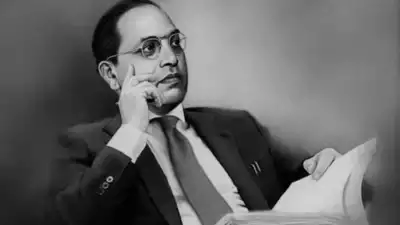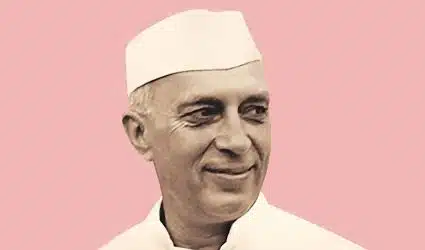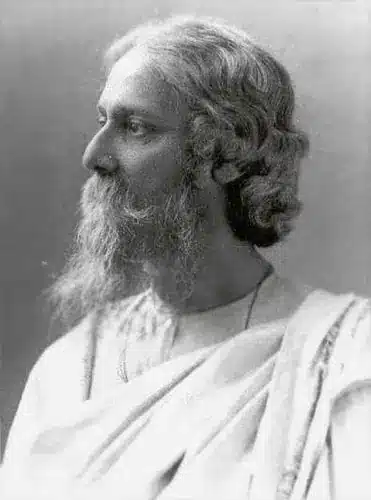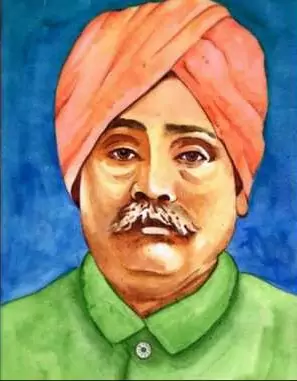Bhimrao Ramji Ambedkar (14 April 1891 – 6 December 1956)
- Baba Saheb Dr. Bhimrao Ambedkar was born on 14th April, 1891 in Mhow in Madhya Pradesh.
- He was the fourteenth child of Ramji Maloji Sakpal.
- The life of Dr. Bhimrao Ambedkar was marked by struggles but he proved that every hurdle in life can be surmounted with talent and firm determination.
- The biggest barrier in his life was the caste system adopted by the Hindu society according to which the family he was born in was considered ‘untouchable’.
Education
- Ambedkar was the first Indian to pursue a doctorate in economics abroad.
- In the year 1908, young Bhimrao passed the Matriculation examination from Bombay University with flying colours.
- Four years later he graduated in Political Science and Economics from Bombay University and got a job in Baroda.
- Around the same time his father passed away. Although he was going through a bad time, Bhimrao decided to accept the opportunity to go to USA for further studies at Columbia University for which he was awarded a scholarship by the Maharaja of Baroda. Bhimrao remained abroad from 1913 to 1917 and again from 1920 to 1923.
- During this period he had established himself as an eminent intellectual.
- Columbia University had awarded him the PhD for his thesis, which was later published in a book form under the title “The Evolution of Provincial Finance in British India”. But his first published article was “Castes in India – Their Mechanism, Genesis and Development”.
- During his sojourn in London from 1920 to 1923, he also completed his thesis titled “The Problem of the Rupee for which he was awarded the degree of DSc. Before his departure for London he had taught at a College in Bombay and also brought out Marathi weekly whose title was ‘Mook Nayak’ (meaning ‘Dumb Hero’).

War against the Practice of Untouchability
- By the time he returned to India in April 1923, Dr Bhimrao Ambedkar had equipped himself fully to wage war against the practice of untouchability on behalf of the untouchable and the downtrodden.
- In 1923, he set up the ‘Bahishkrit Hitkarini Sabha (Outcastes Welfare Association), which was devoted to spreading education and culture amongst the downtrodden, improving the economic status and raising matters concerning their problems in the proper forums to focus attention on them and finding solutions to the same.
- The problems of the downtrodden were centuries old and difficult to overcome. Their entry into temples was forbidden. They could not draw water from public wells and ponds. Their admission in schools was prohibited.
- In 1927, he led the Mahad March at the Chowdar Tank at Colaba, near Bombay, to give the untouchables the right to draw water from the public tank where he burnt copies of the ‘Manusmriti’ publicly.
- This marked the beginning of the anticaste and ant-priest movement. The temple entry movement launched by Dr. Ambedkar in 1930 at Kalaram temple, Nasik is another landmark in the struggle for human rights and social justice.
Poona Pact
- In the meantime, Ramsay McDonald announced the ‘Communal Award’ as a result of which in several communities including the ‘depressed classes’ were given the right to have separate electorates.
- This was a part of the overall design of the British to divide and rule. Gandhiji wanted to defeat this design and went on a fast unto death to oppose it.
- On 24th September 1932, Dr. Ambedkar and Gandhiji reached an understanding, which became the famous Poona Pact.
- According to this Pact, in addition to the agreement on electoral constituencies, reservations were provided for untouchables in Government jobs and legislative assemblies.
- The provision of separate electorate was dispensed with. The Pact carved out a clear and definite position for the downtrodden on the political scene of the country. It opened up opportunities of education and government service for them and also gave them a right to vote.
Role of Ambedkar in Drafting the Constitution
- The Constituent Assembly entrusted the job of drafting the Constitution to a committee and Dr. Ambedkar was elected as Chairman of this Drafting Committee.
- In the beginning of 1948, Dr. Ambedkar completed the draft of the Constitution and presented it in the Constituent Assembly. In November 1949, this draft was adopted with very few amendments.
- Many provisions have been made in the Constitution to ensure social justice for scheduled castes, scheduled tribes and backward classes.
- Dr. Ambedkar was of the opinion that traditional religious values should be given up and new ideas adopted.
- He laid special emphasis on dignity, unity, freedom and rights for all citizens as enshrined in the Constitution.
- Ambedkar advocated democracy in every field: social, economic and political. For him social Justice meant maximum happiness to the maximum number of people.
Political Career of Ambedkar
- Dr. Ambedkar attended all the three Round Table Conferences in London and each time, forcefully projected his views in the interest of the ‘untouchable’.
- He exhorted the downtrodden sections to raise their living standards and to acquire as much political power as possible. He was of the view that there was no future for untouchables in the Hindu religion and they should change their religion if need be. In 1935, he publicly proclaimed,” I was born a Hindu because I had no control over this but I shall not die a Hindu.
- In 1936, Ambedkar founded the Independent Labour Party, which contested the 1937 Bombay election to the Central Legislative Assembly for the 13 reserved and 4 general seats, and secured 11 and 3 seats respectively.
- Ambedkar also fought against the khoti system prevalent in Konkan, where khots, or government revenue collectors, regularly exploited farmers and tenants. In 1937, Ambedkar tabled a bill in the Bombay Legislative Assembly aimed at abolishing the khoti system by creating a direct relationship between government and farmers.
- In 1939, during the Second World War, he called upon Indians to join the Army in large numbers to defeat Nazism, which he said, was another name for Fascism.
- In 1947, when India became independent, the first Prime Minister Pt. Jawaharlal Nehru, invited Dr. Ambedkar, who had been elected as a Member of the Constituent Assembly from Bengal, to join his Cabinet as a Law Minister.
- Dr. Ambedkar had differences of opinion with the Government over the Hindu Code Bill, which led to his resignation as Law Minister.
- Ambedkar contested in the Bombay North first Indian General Election of 1952, but lost to his former assistant and Congress Party candidate Narayan Kajrolkar. Ambedkar became a member of Rajya Sabha, probably an appointed member. He tried to enter Lok Sabha again in the by-election of 1954 from Bhandara, but he placed third (the Congress Party won). By the time of the second general election in 1957, Ambedkar had died.
- On 30 September 1956, B. R. Ambedkar had announced the establishment of the “Republican Party of India” by dismissing the “Scheduled Castes Federation”, but before the formation of the party, he died on 6 December 1956. After that, his followers and activists planned to form this party. The Republican Party of India was formed on 3 October 1957. N. Sivaraj was elected as the President of the party.
Mahaparinirvan of Ambedkar
- On 24th May, 1956, on the occasion of Buddha Jayanti, he declared in Bombay, that he would adopt Buddhism in October.
- On October 14, 1956 he embraced Buddhism along with many of his followers.
- The same year he completed his last writing ‘Buddha and His Dharma’.
- Dr. Ambedkar’s patriotism started with the upliftment of the downtrodden and the poor. He fought for their equality and rights.
- His ideas about patriotism were not only confined to the abolition of colonialism, but he also wanted freedom for every individual.
- For him freedom without equality, democracy and equality without freedom could lead to absolute dictatorship. On 6th December, 1956, Baba Saheb Dr. B.R. Ambedkar attained ‘Mahaparinirvan’.
Important books written by Dr. Ambedkar
| Castes in India: Their Mechanism, Genesis and Development |
| Mook Nayak (weekly) |
| The Problem of the Rupee: its origin and its solution |
| Bahishkrut Bharat (India Ostracized) |
| Janta (weekly) |
| The Annihilation of Caste |
| Federation Versus Freedom |
| Thoughts on Pakistan |
| Ranade, Gandhi and Jinnah |
| Mr. Gandhi and Emancipation of Untouchables |
| What Congress and Gandhi have done to the Untouchables |
| Pakistan Or Partition Of India |
| State and Minorities |
| Who were the Shudras |
| Maharashtra as a Linguistic Province |
| The Untouchables |
| Buddha Or Karl Marx |
| The Buddha and his Dhamma |
| Riddles in Hinduism |
| Manu and the Shudras |
Famous Quotes of Ambedkar
Here are some inspiring quotes by him as we commemorate the memory of Dr Babasaheb Bhimrao Ramji Ambedkar to boost our motivation:
- “I measure the progress of a community by the degree of progress which women have achieved.”
- “I like the religion that teaches liberty, equality, and fraternity.”
- “Be educated, be organized, and be agitated.”
- “Cultivation of mind should be the ultimate aim of human existence.”
- “A great man is different from an eminent one in that he is ready to be the servant of the society.”
- “Freedom of mind is the real freedom.”
- “I am proud of my country, India, for having a constitution that enshrines principles of democracy, socialism, and secularism.”
- “Law and order are the medicine of the body politic, and when the body politic gets sick, medicine must be administered.”
- “Life should be great, rather than long.”
- “History shows that where ethics and economics come in conflict, victory is always with economics. Vested interests have never been known to have willingly divested themselves unless there was sufficient force to compel them.”
Also refer :




